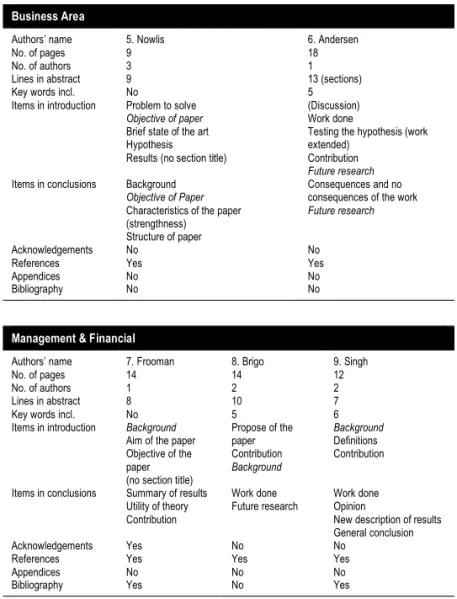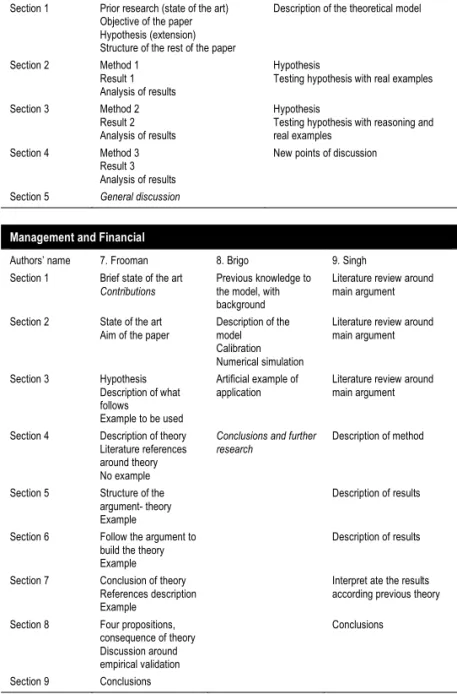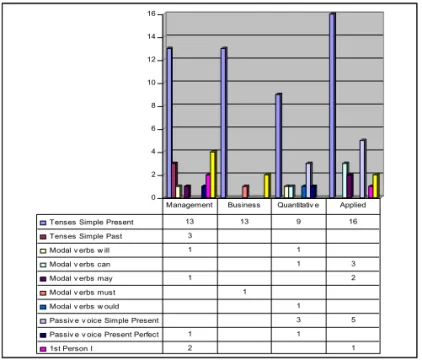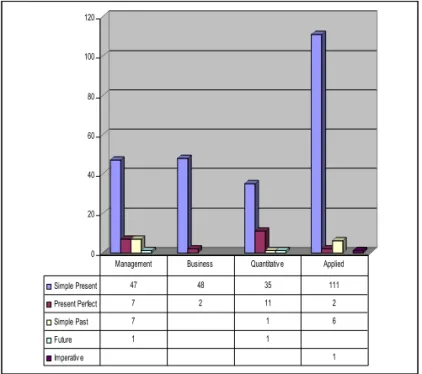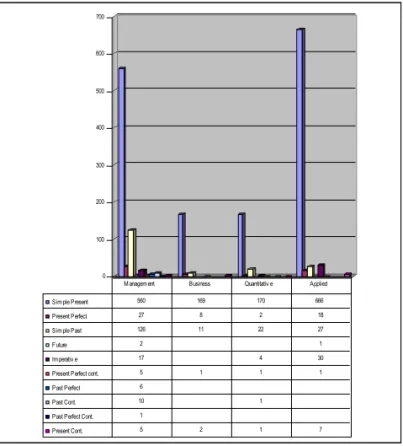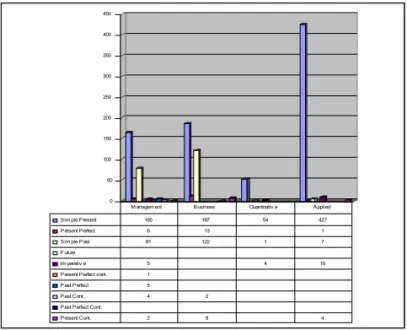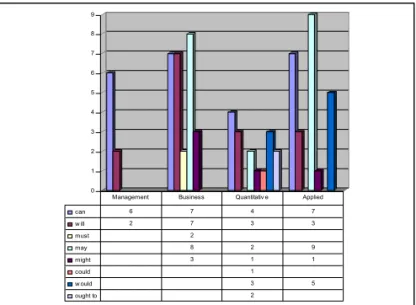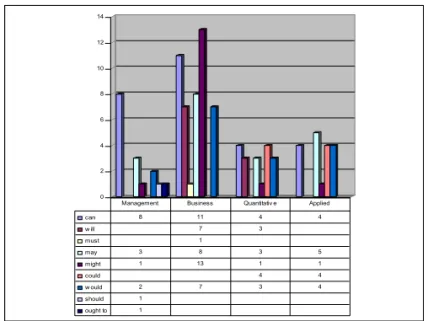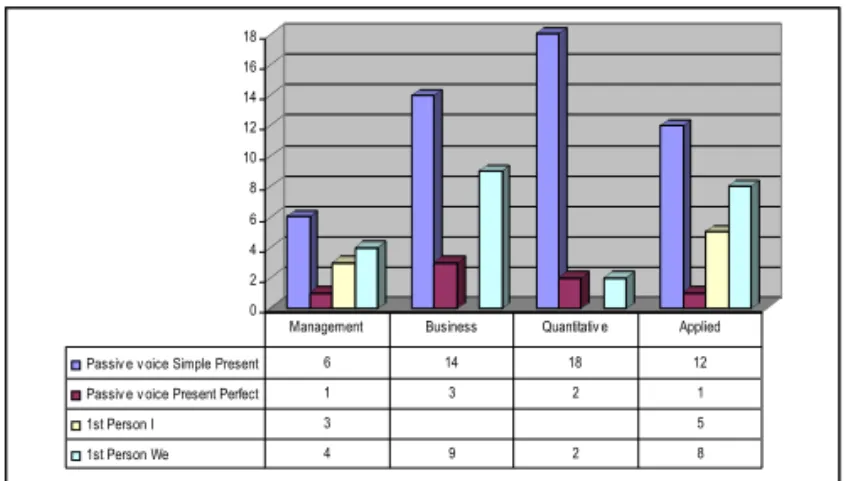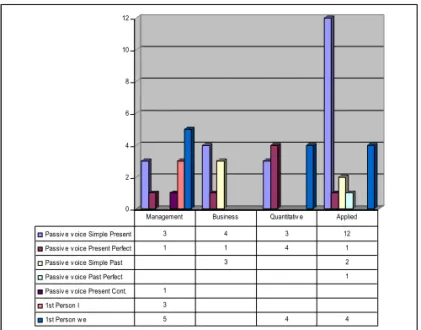Abstract
English for Specific Purposes (ESP) and English for Academic Purposes (EAP) are two disciplines whose importance has been growing lately. This is due to the ever-increasing interest in the language that describes the most recent developments in varying disciplines and the need to communicate in and understand that language. One of the means for the spreading of those new developments in the different technologies is through research articles in specialised journals. These impose certain rules that must be fulfilled by all researchers who want to see their papers published. Much literature has been written about this, covering most linguistic areas (see, for instance, Bazerman, 1988; Bhatia, 1993; Dudley-Evans, 1994; Fortanet, 2002). Many articles contrast different genres but rarely distinguish different sub-areas within a genre (Bridgman & Carlson, 1984; Malcolm, 1987; Hyland, 1988; Neff Van Aertselaer, 2006). In the present case, we will consider texts within the discipline of Economics. The aim of this paper is to show a structural, grammatical and metatextual analysis of ten articles recently published in very prestigious specialised publications, covering the most important areas of study in Economics. We conclude by making a contrastive rhetorical analysis of the four sub-genres analysed here. These are: Applied Economy, Quantitative Economy, Financial Economy, and Management and Business.
Key words:metadiscourse, genre, rhetoric, economics, discourse analysis.
Resumen
Anlisis discursivo y metadiscurso pragmtico de cuatro sub-reas de Economa en artculos de investigacin
Este artículo se inscribe en una línea de trabajo cuya importancia ha ido en
Discoursive analysis and pragmatic
metadiscourse in four sub-areas of
Economics research articles
Concepción Hernández Guerra and Juan M. Hernández Guerra
Universidad de Las Palmas de Gran Canaria (Spain)
aumento en los últimos años. Se trata del Inglés para Fines Específicos y del Inglés para Fines Académicos, disciplinas que han experimentado un desarrollo considerable debido al interés que despierta la lengua inglesa como vehículo de difusión de los nuevos avances científico-técnicos, y a la consideración actual de esta lengua como herramienta de comunicación común. Desde esta perspectiva, es bien sabido que uno de los mecanismos esenciales para la difusión de los nuevos avances científico-técnicos son los artículos de investigación publicados en revistas especializadas, que son las que establecen las normas que deben ser aceptadas por los investigadores que deseen publicar en ellas. A este respecto, disponemos de numerosos artículos: unos contienen un estudio contrastivo de diferentes géneros con el objetivo de precisar sus rasgos definitorios (véase, por ejemplo, Bazerman, 1988; Bhatia, 1993; Dudley-Evans, 1994; Fortanet, 2002); pero muy pocos ahondan en los distintos subgéneros en que puede manifestarse un género en particular (Bridgman & Carlson, 1984; Malcolm, 1987; Hyland, 1988; Neff Van Aertselaer, 2006). Con tales planteamientos, este trabajo desarrolla un análisis estructural, gramatical y metatextual de un corpus de textos constituido por diez artículos aparecidos recientemente en prestigiosas publicaciones especializadas en Economía y, particularmente, en las ramas siguientes: Economía Aplicada, Economía Cuantitativa, Economía Financiera, y Gestión y Administración Empresarial. Concluye esta investigación con un estudio retórico contrastivo de las cuatro ramas objeto de análisis.
Palabras clave: metadiscurso, género, retórica, economía, análisis del discurso.
Introduction
different sub-areas. We consider it important, as the identification of those differences can mean successful publication and a wider knowledge of the specific conventions required. For this reason this paper will focus on ten articles from four different sub-areas on Economics to analyse their structural, grammatical and rhetorical conventions. The first two will serve us as an introduction to the most important one, the rhetorical convention, as the functional perspective is considered the most useful in this type of text. To do this, we must briefly refer to some relevant background notions: genre, rhetoric and metadiscourse.
“Genre” is a term related to the description of language use in academic or professional settings. Texts are no longer considered as merely a matter of form and content, nor genre as simply the form into which the content is put. Nowadays when we identify a text we make assumptions not only about its form but also about its purposes, its subject matter, its writer and its intended reader. So, according to Devitt (1993: 575), “genre entails purposes, participants, and themes, so understanding genre entails understanding a rhetorical and semiotic situation and a social context.” For this reason, research papers can be said to constitute a genre within the scientific world with different conventions across different disciplines.
“Rhetoric”, in the framework used here, is understood as persuasive discourse; that is, the strategies writers use not only to convince readers of their claims but also to increase the credibility of their research. In this way, the analysis for the reasons of changes in expressions belongs to rhetoric. Genre and rhetoric can be seen as two different dimensions, the latter being conditioned by the former (Valero-Garcés, 1996).
Lastly, Hyland (1998: 437) defines “metadiscourse” as follows:
Based on a view of writing as a social and communicative engagement between writer and reader, metadiscourse focuses our attention on the ways writers project themselves into their work to signal their communicative intentions. It is a central pragmatic construct which allows us to see how writers seek to influence readers’ understandings of both the text and their attitude towards its content and the audience.
realized through all kinds of linguistic units (from affixes to whole sentences), it is quite impossible to classify them solely according to linguistic criteria. In other words, it is relatively easy to accept the concept of metadiscourse but more difficult to establish its limits (Swales, 1990). For all that has been said above we may understand that some features of scientific discourse are determined by the genre the text belongs to, whereas others are influenced by the writer’s own style. We shall analyze both features in the different types of texts to conclude which should be considered as common when writing for a research paper within particular Economics sub-areas.
Materials
We have selected ten research articles on Economics with a high impact factors of the official database within the studies of social sciences (Social Science Citation Index, SSCI in ISI Web of Science and Condit) and that cover four of the largest areas in Economics research: Applied Economy, Quantitative Economy, Financial Economy, and Management and Business (for a full list of titles, see Appendix). Following the JEL (Journal of Economic
Literature) classification that divides the different areas from A to Z it could
be stated that our articles cover the theory of Economics (corresponding to the letter A in the classification), Mathematical and Quantitative Methods (C), Financial Economy (G) and Business Administration and Business Economy, Marketing and Accounting (M). Generally speaking, Quantitative Economy bases its research on mathematical methods in Economics while Applied Economy looks at the application of theory and methods in economic practice. In other words, Applied Economy analyses and interprets reality and looks for policy implications of the results. Business Economy deals with different problem-solution matters in businesses and Financial and Management with business administration.
area, published in leading journals; and three (i.e., those by Frooman, Brigo, and Singh) in Management and Financial Economy, also with a high impact index in their field.
Textual Features and Grammatical Pattern
Textual features
Textual features are the characteristics that mark a genre and include the layout, the organization, and so on. Such formal features are the physical markings of a genre, its traces, and hence may be quite revealing regarding genres even though they comply with the form, not with the content. Our comments will be based on an analysis of Tables 1 and 2, which have been developed after a comprehensive reading of the papers selected, focusing on the different items stated.
objective of the paper but, interestingly enough, it is not named in the introduction of all the papers, as would be expected, but in seven, all of them belonging to Applied and Business.
Applied Economy
Authors’ name 2. Nickell 3. Siciliani 4. Hoxby
No. of pages 27 7 30
No. of authors 3 1 1
Lines in abstract 5 11 8
Key words incl. No 3 No
Items in introduction Problem to solve
Objective of paper Hypothesis Structure of paper
Context Objective of paper Contribution Structure of paper
Context Objective of paper Utility of paper Justification of methodology (no section title)
Items in conclusions Work done
Results
Work done Results Policy implications New empirical evidences
Results Implications
Acknowledgements Yes Yes Yes
References Yes Yes Yes
Appendices Yes No No
Bibliography No No No
Quantitative Economy
Authors’ name 1. Kim 10. Bianchi
No. of pages 20 24
No. of authors 1 1
Lines in abstract 8 12
Key words incl. 6 No
Items in introduction Problem to solve
Contribution Utility of study Structure of paper
Background Problem to solve Contribution
Items in conclusions Problem to solve
Work done Utility of paper Analysis of results Future extensions Limitations
Contribution
Opinion based in experience Future research
Acknowledgements Yes No
References Yes Yes
Appendices Yes No
The second most frequent move is the contribution and background, named in five (Quantitative and Management). It is remarkable that no move is repeated in all the papers studied. There is quite a wide degree of freedom in this regard. In the conclusions section of Applied Economy results and conclusions are not clearly defined. In Quantitative Economy the contribution/usefulness of the paper is named, which is quite striking, as this is a theoretical discipline; and future research is just expressed in Quantitative Economy and Business.
In Table Two the different moves in the remainder of the sections are described. The articles we are dealing with are not homogeneous in
Business Area
Authors’ name 5. Nowlis 6. Andersen
No. of pages 9 18
No. of authors 3 1
Lines in abstract 9 13 (sections)
Key words incl. No 5
Items in introduction Problem to solve
Objective of paper Brief state of the art Hypothesis Results (no section title)
(Discussion) Work done
Testing the hypothesis (work extended)
Contribution Future research
Items in conclusions Background
Objective of Paper Characteristics of the paper (strengthness)
Structure of paper
Consequences and no consequences of the work Future research
Acknowledgements No No
References Yes Yes
Appendices No No
Bibliography No No
Management & Financial
Authors’ name 7. Frooman 8. Brigo 9. Singh
No. of pages 14 14 12
No. of authors 1 2 2
Lines in abstract 8 10 7
Key words incl. No 5 6
Items in introduction Background
Aim of the paper Objective of the paper (no section title)
Propose of the paper Contribution Background Background Definitions Contribution
Items in conclusions Summary of results
Utility of theory Contribution
Work done Future research
Work done Opinion
New description of results General conclusion
Acknowledgements Yes No No
References Yes Yes Yes
Appendices No No No
Bibliography Yes No Yes
Table 1. Textual features across sub-areas in Economics.
structure. The standard structure of the research article in English, that is, Abstract – Introduction – Method – Results – Discussion/Conclusion (IMRD) is not completely fulfilled in social science papers. A first view indicates that the number of sections is not constant except in Business. Although not following the IMRD model strictly, it is Singh (paper 9, Management) who most closely follows it.
Applied Economy
Authors’ name 2. Nickell 3. Siciliani 4. Hoxby
Section 1 Description of data/reality
Description of the model
Empirical evidence Theoretical analysis of the model
Importance of the study
Section 2 Model-empirical economic strategy
Policy implications and Conclusions
Previous theoretical insight of the problem
Section 3 Analysis of results Description of the model
Section 4 Summary and
Conclusions
Problem identification
Section 5 Analysis of possible
alternative measures
Section 6 Propose of a measure
Goodness of measure
Section 7 Extended description of the
model
Section 8 Description of data sources
Section 9 Description and analysis of
results
Section 10 Conclusions
Quantitative Economy
Authors’ name 1. Kim 10. Bianchi
Section 1 Description of model Extended problem to be solved Literature review
Section 2 Numerical experiments
Simulations of the model
Description of the propose theory
Section 3 Extended argument of the theory
Section 4 Extended argument of the theory
Example
Section 5 Shorter argument of the theory
As we can see, Business and Management is the sub-area that dedicates longer sections to the explanation of their research (8 or 9 sections), while the other three sub-areas have fewer chapters (with the exception, of course,
Business Area
Authors’ name 5. Nowlis 6. Andersen
Section 1 Prior research (state of the art)
Objective of the paper Hypothesis (extension) Structure of the rest of the paper
Description of the theoretical model
Section 2 Method 1
Result 1 Analysis of results
Hypothesis
Testing hypothesis with real examples
Section 3 Method 2
Result 2 Analysis of results
Hypothesis
Testing hypothesis with reasoning and real examples
Section 4 Method 3
Result 3 Analysis of results
New points of discussion
Section 5 General discussion
Management and Financial
Authors’ name 7. Frooman 8. Brigo 9. Singh
Section 1 Brief state of the art
Contributions
Previous knowledge to the model, with background
Literature review around main argument
Section 2 State of the art
Aim of the paper
Description of the model Calibration Numerical simulation
Literature review around main argument
Section 3 Hypothesis
Description of what follows Example to be used
Artificial example of application
Literature review around main argument
Section 4 Description of theory
Literature references around theory No example
Conclusions and further research
Description of method
Section 5 Structure of the
argument- theory Example
Description of results
Section 6 Follow the argument to
build the theory Example
Description of results
Section 7 Conclusion of theory
References description Example
Interpret ate the results according previous theory
Section 8 Four propositions,
consequence of theory Discussion around empirical validation
Conclusions
Section 9 Conclusions
of Hoxby, who has written 10 sections). Traditionally, technical areas are not usually very extensive in their literature, and Management and Financial, dealing with problems in businesses, could be considered to be half way between pure technical areas and more literary ones. But it is also true that the same could be said of Business Area, which in our sample conforms to the pattern IRMD. Business area, on the one hand, and Management and Financial, on the other, express the method, results and analysis of results in the same section, having applied different methods or theories. This is different to the case of Applied Economy and Quantitative Economy, which base their research on an experiment.
Grammatical pattern
There has been much literature explaining all the aspects that must be taken into account when writing an academic paper (Weissberg & Buker, 1990; Swales & Feak, 1994; Day, 1995; Fortanet, 2002; among others). All of them give advice about the need to write plain English and be as accurate and clear as possible. Day (1995), for instance, is quite general but offers interesting clues for writing plain English from a semantic and syntactic point of view. He recommends the avoidance of the passive voice as the active voice is more direct and always less wordy although it does not mean that on some occasions it is better to use the passive voice. With reference to tenses, it is admitted that present and past tenses are the most frequently used. The future tense might be used in pointing to the need for further experimentation, for example, and only rarely should one use the so-called “perfect” tenses.
Next, we shall consider how grammatical features are presented in our corpus. To do this we shall analyse the frequency in use of tenses, passive voice, modal verbs and first person. We consider them to be the most important aspects to deal with in the grammatical analysis of a text, as they are basic when writing any scientific paper due to their frequency and the importance in the meaning and purpose of the work.
Economy, the simple present in passive voice is also used on five occasions. As we can see in Table 3 they combine both voices, and this means it is richer in the combination of different elements.
With reference to modal verbs, something different happens. The use of modal verbs in abstracts is very rare as abstracts must express what the paper will be about and modal verbs generally encode meanings connected with degrees of certainty and degrees of necessity. That is, it seems somewhat contradictory to express a summary of the research done in a less than categorical way. But, as Carter states (2006), modals are used to say whether something is real or true, or whether it is the subject of speculation rather than definite knowledge.
About the passive voice, Tarone et al. (1981) concluded in a paper that investigated the use of the active and passive forms in astrophysics journal articles that within the conventions of the genre studied it was the writer’s communicative purpose that governs choice at the grammatical and lexical levels. This can probably be also applied to the discipline we are studying. The use of the passive voice in abstracts is very odd, and we can find several examples in which not one instance appears, although Applied Economy is an exception, as we said above.
Table 3. Grammatical pattern in abstracts.
0 2 4 6 8 10 12 14 16
Tenses Simple Present 13 13 9 16
Tenses Simple Past 3
Modal v erbs w ill 1 1
Modal v erbs can 1 3
Modal v erbs may 1 2
Modal v erbs must 1
Modal v erbs w ould 1
Passiv e v oice Simple Present 3 5
Passiv e v oice Present Perfect 1 1
1st Person I 2 1
The use of the first person singular in abstracts is almost non-existent even though the abstract is the summary of the intention of the author when writing the paper. This may be the case because, as Parkinson and Adendorff (2004: 381) state, ”propositions made impersonal by removal of people (often achieved by passivisation and nominalization) give the impression of objectivity”.
The frequency of use of present tenses in the introduction and following sections is also remarkable (see Tables 4 to 7). Distinguishing every sub-category in the introduction, Quantitative Economy also makes use of tenses other than the simple present. This is due to the explanation they offer of the problem to solve. To do this they use the simple past even though present is more frequent (17 to 4 in paper 1; 18 to 7 in paper 10). Kim (paper 1, Quantitative Ec.) explains “Moreover, the effects of uncertainty on optimal policy formulation has not yet received much attention in the CGE modelling literature” (page 98) but, for instance, Siciliani (paper 3, Applied E.) writes in the Introduction “Long waiting times and waiting lists remain issues of major concern in several national health services” (page 17) as Applied Economy starts from a current problem and not from previous research.
Table 4. Tenses in Introductions.
0 20 40 60 80 100 120
Simple Present 47 48 35 111 Present Perfect 7 2 11 2
Simple Past 7 1 6
Future 1 1
Imperativ e 1
In the description and results sections, Management is the richest sub-area in the use of tenses, as they use ten different tenses in these sections. The other disciplines focus mainly on the simple present as this expresses a description performed at “a time around now”, or the more general, permanent time relating to truths and general facts (Carter, 2006: 410). This is the most widely used tense in research papers.
In the conclusions section, as shown in Table 7, the use is quite balanced although the use of the simple present is noticeable. In Business papers, they appear almost in the same number as the simple past. This is due to the fact that they include a summary of the research done. For instance in Nowlis (paper 5) we can read “Our studies found that when the first factor…” (page 509); or in Houman (paper 6), “Malone et al. expected that…” (page 161).
Finally, Management is the sub-area that employs more varied tenses in mid-sections. In every paper we found five different tenses in every section; that is, simple present, simple past, past perfect, past continuous and past perfect continuous.
Table 5. Tenses in Descriptions. 0
100 200 300 400 500 600 700
Sim ple Present 560 169 170 666
Present Perfect 27 8 2 18
Sim ple Past 126 11 22 27
F uture 2 1
Im perativ e 17 4 30
Present Perfect cont. 5 1 1 1
Past Perfect 6
Past Cont. 10 1
Past Perfect Cont. 1
Present Cont. 5 2 1 7
Now, let’s turn to Tables 8 to 11. The use of modal verbs in introduction and conclusions sections is not so frequent as in mid- sections but this is due to the difference in length rather than to other causes. As we have already said, this grammatical aspect must be considered of great importance by researchers in their publications because of its extensive use in the explanations of the development of the research done.
0 50 100 150 200 250 300 350 400 450
Sim ple Present 165 187 54 427
Present Perfect 6 13 1
Sim ple Past 81 122 1 7
F uture
Im perativ e 5 4 10
Present Perfect cont. 1
Past Perfect 5
Past Cont. 4 2
Past Perfect Cont.
Present Cont. 2 8 4
M anagem ent Business Quantitativ e Applied
Table 6. Tenses in Results.
Table 7. Tenses in Conclusions.
0 10 20 30 40 50 60 70 80
Sim ple Present 69 34 19 79 Present Perfect 6 5 4 6
Sim ple Past 4 21 3
F uture
Im perativ e 1
Present Perfect Cont. Past Perfect Past Cont. Past Perfect Cont.
Present Cont. 1 1 1
Table 8. Modal verbs in Introductions.
0 1 2 3 4 5 6 7 8 9
can 6 7 4 7
w ill 2 7 3 3 must 2
may 8 2 9
might 3 1 1
could 1
w ould 3 5
ought to 2
Management Business Quantitativ e Applied
Table 9. Modal verbs in Descriptions.
0 5 10 15 20 25 30 35 40 45
can 36 21 30 41
w ill 29 19 10 34
m ust 7 3 3 11
m ay 29 9 9 22
m ight 2 12 2 9
could 11 1 11 5
w ould 14 7 3 3
should 6 10 3 8
shall 0 3
ought to 1 3
Tables 12 to 15 comprise the use of the passive voice and the first person. Contrary to what happened with modal verbs, passive voice is mostly used in the present tense but in a very low number. This is due to the fact that complex tenses could mean a troublesome proposition and the main objective of every researcher must be to express the research as clear as possible, not only in the conclusions but in the development of the
Table 10. Modal verbs in Results. 0
5 10 15 20 25 30
can 7 27 9 10
w ill 21 11 2 2
must 2
may 9 29 1 8
might 4 6
could 13 2 3 3
w ould 22 15 2 6
should 1 1 1 2
Management Business Quantitativ e Applied
Table 11. Modal verbs in Conclusions.
0 2 4 6 8 10 12 14
can 8 11 4 4
w ill 7 3
must 1
may 3 8 3 5
might 1 13 1 1
could 4 4
w ould 2 7 3 4
should 1
ought to 1
investigation. Curiously enough, something similar happens in the next sections where the few examples that we can find are in the present tense. In section five and in the conclusions of Applied Quantitative and Business there are some more examples but they cannot be considered meaningful.
0 2 4 6 8 10 12 14 16 18
Passiv e v oice Simple Present 6 14 18 12 Passiv e v oice Present Perfect 1 3 2 1
1st Person I 3 5
1st Person We 4 9 2 8
Management Business Quantitativ e Applied
Table 12. Passive voice and first person in Introductions.
Table 13. Passive voice and first person in Descriptions. 0
10 20 30 40 50 60 70 80 90
Passiv e v oice Simple Present 64 25 47 86 Passiv e v oice Present Perfect 7 2 3 4
Passiv e v oice Simple Past 14 13 7
Passiv e v oice Past Perfect 1
1st Person I 42 30
1st Person w e 85 6 60
With reference to the use of the first person, singular and plural, in these texts what is remarkable is the irregular use of this form in Business papers as there are sections, like descriptions and conclusions, where no examples can be found. Added to this, authors only use the pronoun “we”. This characteristic can also be traced in Quantitative Economy texts but in the
Table 14. Passive voice and first Person in Results. 0
5 10 15 20 25 30 35 40 45
Passiv e v oice Simple Present 20 33 13 44
Passiv e v oice Present Perfect 2 3 1
Passiv e v oice Simple Past 14 22 2 Passiv e v oice Past Perfect 1
1st Person I 3 7
1st Person w e 12 31 12 29
Management Business Quantitativ e Applied
Table 15. Passive voice and first person in Conclusions. 0
2 4 6 8 10 12
Passiv e v oice Simple Present 3 4 3 12 Passiv e v oice Present Perfect 1 1 4 1
Passiv e v oice Simple Past 3 2
Passiv e v oice Past Perfect 1
Passiv e v oice Present Cont. 1 1st Person I 3
1st Person w e 5 4 4
other disciplines both are combined (although “we” is more frequent than “I”).
It must be stated that the use of the personal pronoun “we” in paper number four (Applied Ec.) is used in a very general way, so as not to indicate that the subject is the research team but people in general. We can quote “My goals are to shed light on the system we have and to demonstrate general properties of school choice that are helpful for thinking about reforms” (Hoxby, 2000: 1209).
Rhetorical Elements
Several metadiscourse taxonomies have been proposed in the literature so as to classify metatextual elements according to their form, meaning, or function. Salager-Meyer (1994), for instance, offered a research based on hedges in medical English written discourse with didactic purposes. A preceding important research was carried out by Myers (1989). To “help understand the interactions between writers and readers in written texts” (Myers, 1989: 3), he distinguishes between positive politeness and negative politeness. The first one is based on the strategic use of pronouns to stress solidarity, of modifiers assuming common ground, of emotional responses to indicate solidarity, and other devices as joking and giving gifts. On the other hand, negative politeness is expressed through hedging, impersonal constructions and the assertion of general rules. As we can see, both scholars focus their research on the attitude of the writer mixing the elements from different grammatical categories that they consider relevant to fulfil their purpose.
as we consider it splits the strictly metadiscoursive elements from the pure grammatical ones and better fits within the structure of this paper. The main difference between both categories is that while textual metadiscourse refers to “devices which allow the recovery of the writer’s intention by explicitly establishing preferred interpretation of propositional meanings” (Hyland, 1998: 442), interpersonal metadiscourse alerts readers to “the author’s perspective towards both the propositional information and the readers themselves, thus contributing to a writer-reader relationship and anticipating the subjective negatibility of statements” (Hyland, 1998: 443). Therefore, textual metadiscourse connects sentences in a meaningful way, enabling the writer to emphasize what needs to be made explicit to the academic audience. In turn, interpersonal metadiscourse expresses a personal attitude and a degree of reader involvement.
Category Function Examples
But, before applying this classification into our corpus, a previous analysis will be described following Valero-Garcés’ (1996) proposal in which the number of sentences, the number of paragraphs and their length, plus the approximate number of words are stated to have an idea of how much of the text is a metatext.
Applied Economy Quantitative Economy Business
Category Function Examples
Textual metadiscourse
Logical connectives express semantic relation between main clauses
in addition /but/ therefore/
Frame markers explicitly refer to discourse acts or text stages
finally/ to repeat/ we try
Endophoric markers refer to information in other parts of the text
noted/ above/ below / see
Evidentials refer to source of information from other texts
according to X/ Y, 1990
Code glosses help readers grasp meanings of ideational material
namely/ e.g. / such as
Interpersonal metadiscourse
Hedges withhold writer’s full commitment to statements
might/ perhaps/ about
Emphatics emphasize force or writer’s certainty in message
in fact/ definitely/ obvious
Attitude markers express writer’s attitude to propositional content
surprisingly/ I agree
Relational markers explicitly refer to or build relationship with reader
frankly/ note that/
Person markers explicit reference to author(s) I/ we/ my/ mine/ our
If we divide the total number of words by the number of sentences from Table 17, the result will show that the number of words per sentence is almost constant: 22.6 in Applied Economy; 21.1 in Quantitative Economy; 24.9 in Business, and 22.2 in Management, which reveals that no one makes use of a bigger number of complex sentences than others. If we apply the same mathematical operation in the other items of this table we can check that Applied Economy uses 5.2 sentences in every paragraph but only 3.2 paragraphs per page; that is, they are more keen on longer paragraphs than the rest. In the other end we find Management, that prefers 5.2 paragraphs per page and 4.4 sentences in every paragraph; that is, shorter paragraphs. This information is detailed in Table 17a:
Applied Economy Quantitative Economy Business
If we consider the percentage of metatextual words employed in every discipline (Table 17) we can see that Management makes a wider use (4.77%), while Applied Economy shows a narrower use (3.36%) and, as shown in Table 18, the four different sub-areas use the interpersonal metadiscourse elements more often than the textual ones. If we sum up all the different metadiscourse elements of every type (textual and interpersonal) we shall see that Business shows a narrower difference in the use of one type or the other (41% of textual examples to 51% of interpersonal examples) while
Applied Economy
Quantitative Economy
Business Management
No. of pages 57 33 24 35
Sentences 980 460 539 826
Total words 21622 9708 13448 18381
Paragraphs 186 129 104 184
Metatextual words 728 = 3.36% 404 = 4.16% 534 = 3.97% 877 = 4.77%
Table 17. Number of examples with the percentage per sub-area.
Applied Economy
Quantitative Economy
Business Management
Words per sentence 22.06 21.1 24.9 22.2
Sentences per page 17.1 13.9 22.4 23.6
Sentences per paragraph 5.2 3.5 5.1 4.4
Paragraphs per page 3.2 3.9 4.3 5.2
Quantitative Economy shows a wider difference (30% to 70%). This probably reflects the common aspect in all of them as being part of the social sciences. They are characterized by not fulfilling the conventions when writing a paper so strictly as the experimental research (Fortanet, 2002).
Textual Metadiscourse Interpersonal Metadiscourse
Focusing on the different rhetorical preferences we can see that Applied Economy tends to use more examples of logical connectives and frame markers than any other variable within textual metadiscourse. Both are related insofar as the first helps to interpret links between ideas and the second provides interpretive framing information about longer elements of the discourse. Business papers use the same percentage but only for frame markers (20.7%), and Management rather lower for logical connectives (18%). So, Applied Economy uses logical connectives and frame markers a slightly more balanced way, while Quantitative Economy is the discipline that makes less use of them. It provides the text with a more neutral tone in the exposition.
The number of examples for endophoric markers, evidentials and code glosses is not so meaningful in any of the sub-areas. Remember that the first two make reference to external texts and the third one gives examples. As we said, the number is not remarkable as the examples seen are in the introduction of the papers but most of the explanation is devoted to the new research done.
If we now focus on the second group, Interpersonal metadiscourse, the use of hedges is the most prominent in all of them. They mark the writer’s reluctance to present or evaluate propositional information categorically (Holmes, 1988; Hyland, 1998). The second category most used is person
Textual Metadiscourse Interpersonal Metadiscourse
Log. Fra. End. Evi. Cod. Hed. Emp. Att. Rel. Per.
A E 76 = 10.43% 78 = 10.71% 30 = 4.12% 23 = 3.15% 52 = 7.14% 232 = 31.8% 4 = 0.54% 35 = 4.80% 35 = 4.80% 163 = 22.3% Q E 30 = 7.42% 24 = 5.94% 33 = 8.16% 14 = 3.46% 20 = 4.95% 190 = 47% 5 = 1.23%
- 6 = 1.48%
82 = 20.2%
B 76 = 14.2% 111 = 20.7% 15 = 2.8% 5 = 0.9% 56 = 10.4% 210 = 39.3% 3 = 0.56%
- - 58 = 10.8%
M 158 = 18% 139 = 15.8% 33 = 3.76% 6 = 0.68% 58 = 6.61% 237 = 27% 29 = 3.30% 31 = 3.53% 1 = 0.11% 156 = 17.7%
markers as they reflect the importance of the degree of authorial presence in contributing to the variability in tenor of a text. This has been simply judged by the frequency of first person pronouns and possessive adjectives to present both propositional and metadiscoursal information. Emphatics and relational markers do not own a relevant number of examples and they can be considered a quite personal option as emphatics serve to emphasise the force of the proposition and relationals serve to address readers. Added to this, no examples can be found of attitude markers in two of the sub-areas. Attitude markers are used to “express the writer’s affective attitude to textual information in a more varied way than hedges” (Hyland, 1998: 444) and, as we can see in Table 18, Quantitative Economy and Business use an important number of hedges; that is, they are not so much interested in using a wide range of instances to express specific feelings such as surprise, obligation, agreement, importance, and so on.
Conclusions
Writing scientific papers within a specific sub-area can involve many specificities, perhaps more than could be seen initially. An appreciation of these slight peculiarities may mean the difference between a successful or unsuccessful publication as well as producing a wider understanding of the conventions required. After a detailed analysis of the texts from a structural, grammatical and rhetorical perspective, all three of these aspects provide revealing conclusions.
Textual features do not follow the same model. Not all the papers express the objective of the paper in the introduction. Quantitative Economy prefers to start off with the problem to solve but Management and Financial is not very strict in the moves included in the introduction. This is due to the fact that the aim in every discipline is not the same so this has a direct consequence in the organization of the paper. Consequently, the differences discovered in the structure are not significant and cannot be considered as rules.
From the grammatical perspective we have seen that some authors prefer not to separate grammatical pattern from metadiscoursive analysis as many elements are quite interlinked. For our purposes the analysis of each category better explains every aspect of our aim. In any case, it is quite striking that linguists do not completely agree about the reasons for the use of these different grammatical elements. In general, they try to offer the different options future scientists can choose from but, in the end, it is the personal style that is reflected.
The use of the simple present is remarkable but the first and most urgent conclusion must be the wider use of simple over perfect tenses. Management takes the most risks, in terms of dealing with different tenses. We have explained that Management deals with business administration so the personal viewpoint plays an important role in the exposition. The same could be said of Business, but it does not comply with this feature. Contrary to what happened in the introduction where hardly any modals were used, in the body of the papers all the sub-areas use a rich and varied number of modals. This can have two interpretations: on the one hand, to enrich the literature offered and, on the other hand, to reflect the uncertainty of the author towards what s/he is explaining. The excessive number of examples could lead to this second option. In any case, the handling and knowledge of the modal verbs are outstanding as researchers give great importance to mood.
In sum, Social Sciences are quite literary in the expression of their research as the moves named in every section cannot be described as common in every sub-area. There is a degree of freedom in the papers accepted for publication so every researcher expresses the development of it in the most appropriate way according to their aim and characteristics.
As we said above, the first two aims eventually gave us the clues to the resources that must be fulfilled by the authors, but with the third aim, that is, rhetorical analysis, the paper shows the writers’ personal style throughout. Indeed, despite the low percentage use of metatextual words in these texts, this aspect is considered to be very important in a paper as it allows us to see how writers seek to influence readers’ understandings of both the text and their attitude towards its content and audience. Thus, Management and Applied Economy appear in both ends, with Applied Economy being the most theoretical discipline. In this way, although in previous chapters no meaningful differences could be traced, it is in this analysis where the gap widens. Interestingly enough, the most theoretical sub-area (Quantitative Economy) does not use fewer metatextual words than the others, including the Interpersonal category. Applied Economy and Management share in the textual sample the use of metatextual words on Logical connectives and Frame markers, and, in the interpersonal sample, Hedges and Personal markers. Quantitative and Business use Hedges in an important number. All the sub-areas studied prefer the use of interpersonal over textual words and Management makes a wider use of metatextual words than the rest. Hence, by this use, the author will be tempted to convince or assure the reader of the successful results and the personal attitude performs a remarkable role in the exposition of content.
(Revised paper received March 2008)
References
Bhatia, V.K. (1993). Analysing Genre: Language Use in Profes-sional Settings. London: Long-man.
Bhatia, V.K. (2004). Worlds of Written Discourse. A Genre-based View. London: Continu-um.
Bhatia, V.K. (2005). Worlds of
Written Discourse. London: Continuum.
Bazerman, C. (1988). Shaping Written Knowledge: the Genre and Activity of the Experimental Article in Science. Madison: Uni-versity of Wisconsin.
Bridgman, B. & S. Carlson (1984). “Survey of Academic
Writing Tasks”. Written Commu-nication 1: 247-80.
Carter, R. (2006). Cambridge Grammar of English. Cambridge University Press.
Dr. Concepción Hernández Guerra is a Doctorate Teacher at the
University of Las Palmas de Gran Canaria. She is currently teaching English at the Faculty of English Philology in that university and has published her research on Business and Computing. Her doctorate thesis dealt with Contrastive Literature (2002). Her current research interest is Discourse Analysis in technical and political texts.
Dr. Juan M. Hernández Guerra is Associate Professor of Mathematics
since 2001 in the Faculty of Economics of the University of Las Palmas de Gran Canaria. He obtained his doctorate degree in 1997 with a PhD dissertation about entrainment and synchronization of economic cycles. As regards research, his current fields of interest are environmental economics and optimization applied to tourism dynamics and aquaculture.
Writing Scholar, 118-136. New-bury Park, CA: Sage.
Day, R. (1995).Scientific Eng-lish: A Guide for Scientists and other Professionals. Phoenix: Oryx Press.
Devitt, A. (1993). “Generalizing about genre: new conceptions of an old concept”. College Com-position and Communication 44: 573-586.
Dudley-Evans, T. (1994). “Genre analysis: an Approach to Text Analysis for ESP” in M. Coulthard (ed.) Advances in Written Text Analysis, 219-228. London: Routledge.
Fortanet, I. (Coord.) (2002). Có-mo escribir un artículo de inves-tigación en inglés. Madrid: Alian-za.
Halliday, M.A.K. (1985). An In-troduction to Functional Gram-mar London: Edward Arnold.
Holmes, J. (1988). “Doubt and certainty in ESL textbooks”. Ap-plied Linguistics91: 20-44.
Hyland, K. (1998). “Persuasion
and context: the pragmatics of academic metadiscourse”. Jour-nal of Pragmatics 30: 437-455.
Malcolm, L. (1987). “What rules govern tense usage in scientific articles?” English for Specific Purposes6: 31-43.
Myers, G. (1989). “The pragmat-ics of politeness in scientific arti-cles”. Applied Linguistics10: 1-35.
Neff Van Aertselaer, J.A. (2006). “A rhetorical analysis approach to English for Academic Purpos-es”. Revista de Lingüística y Lenguas Aplicadas 1: 63-72.
Parkinson, J. & R. Addendorff (2004). “The use of popular sci-ence articles in teaching scientif-ic literacy”. English for Specific Purposes 23: 379-396.
Salager-Meyer, F. (1994). “Hedges and textual commu-nicative function in medical Eng-lish written discourse”. English for Specific Purposes 13: 149-170.
Swales, J. (1990). Genre Analy-sis. English in Academic and
Research Settings. Cambridge: Cambridge University Press.
Swales, J. & C. Feak (1994). Academic Writing for Graduate Students: Essential Tasks and Skills. Ann Arbor: University of Michigan Press.
Tarone, E., S. Dwyer, S. Gillette & V. Icke (1981). “On the use of the passive in two astrophysics journal papers”. English for Spe-cific Purposes Journal 1: 123-140.
Vande Kopple, W. (1985). “Some explanatory discourse on metadiscourse”. College Com-position and Communication 36: 82-93.
Valero-Garcés, C. (1996). “Con-trastive ESP rhetoric: metatext in Spanish-English Economics texts”. English for Specific Pur-poses 15: 279-294.
Appendix
Bianchi, C. (2000). “Introducing SD modelling into planning and control systems to manage SMEs’ growth: a learning-oriented perspective”.System Dynamics Review18, 3: 315-338. Brigo, D. & A. Alfonsi (2005). “Credit default swap calibration and derivatives pricing with the SSRD stochastic intensity model”.Finance and Stochastics9: 29-42.
Frooman, J. (1999). “Stakeholder influence strategies”.Academy of Management Review24, 2: 191-205.
Houman-Andersen, P. (2005). “Export intermediation and the Internet: an activity-unbundling approach”.International Marketing Review 22, 2: 147-164.
Hoxby, C. (2000). “Does competition among public schools benefit students and taxpayers?” The American Economic Review 90, 5: 1209-1238.
Kim, S. (2004). “Uncertainty, political preferences, and stabilization: stochastic control using dynamic CGE models”.Computational Economy 24, 97: 116.
Nickel, S., L. Nunziata & W. Ochel “Unemployment in the OECD since the 1960s. What do we know?”The Economic Journal115: 1-27.
